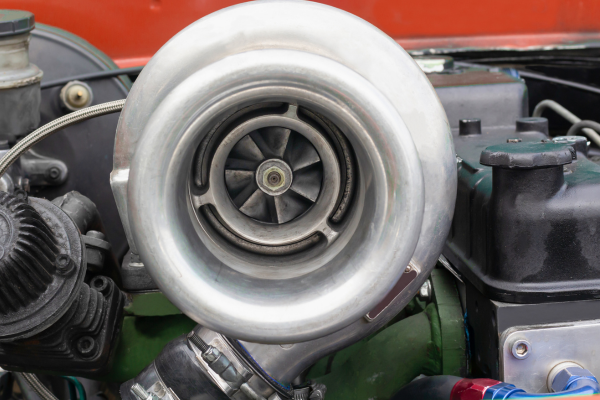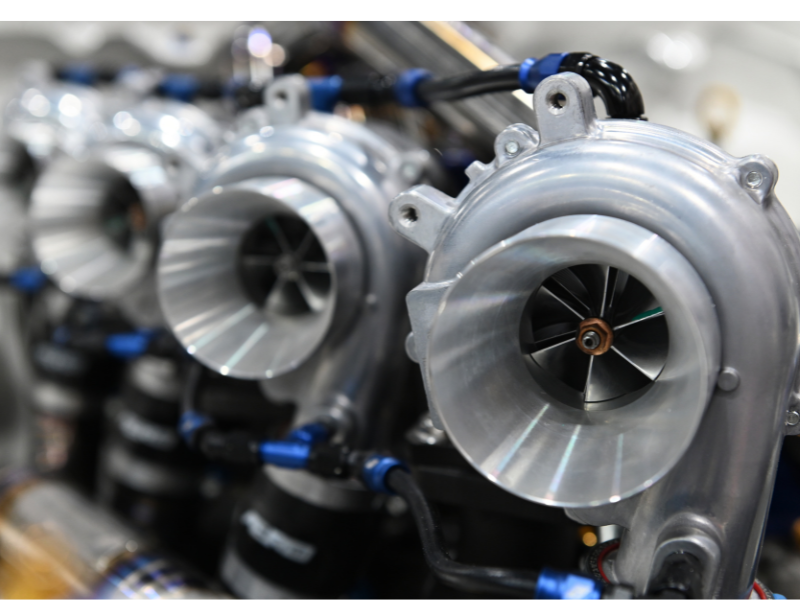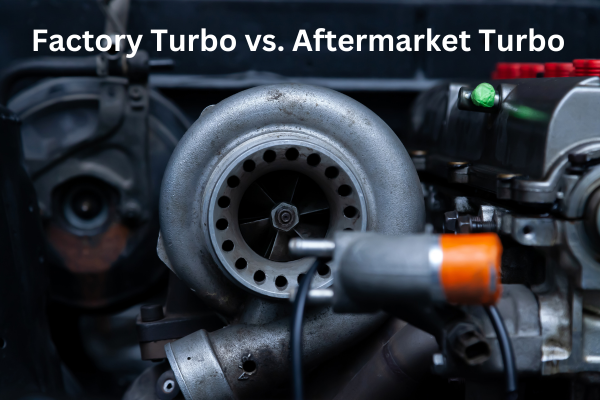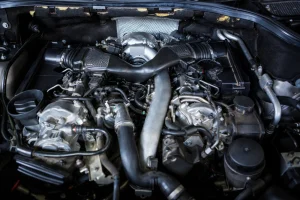In the quest for enhanced engine performance and exhilarating driving experiences, turbochargers have become a pivotal component in the automotive world. Regarding turbochargers, enthusiasts often find themselves at the crossroads of choosing between Factory Turbo vs. Aftermarket Turbo options.
Basics of Factory Turbo
As the name suggests, factory turbos are the turbochargers installed by the original equipment manufacturer (OEM) during vehicle production. These turbos are meticulously designed to complement the engine’s specifications, ensuring optimal performance while adhering to efficiency and emission standards.
Basics of Aftermarket Turbo
Conversely, turbocharger enthusiasts who install or upgrade after purchasing the vehicle use aftermarket turbos. These turbos are crafted with performance as the primary focus, often pushing the engine’s boundaries.
Performance of Factory Turbo vs. Aftermarket Turbo

Factory Turbo Dynamics
Factory turbos dance on the fine line between efficiency and performance. Meticulously calibrated during the vehicle’s production, these turbos aim to strike a harmonious chord—optimizing fuel efficiency while delivering ample power for everyday driving. If you’re an average driver searching for a reliable, fuel-efficient vehicle with a hint of performance, the factory turbo is often the perfect companion.
Aftermarket Turbo Unleashed
Contrastingly, aftermarket turbos are the adrenaline junkie’s delight. Tailored for the performance-driven enthusiast, these turbochargers are meticulously engineered to unlock the engine’s full potential, resulting in a symphony of exhilarating acceleration and top-tier power.
However, it’s essential to acknowledge that this heightened performance might come with a trade-off, potentially impacting fuel efficiency and emissions compliance.
Customization & Tuning of Factory Turbo vs. Aftermarket Turbo
Factory Turbo Customization
Factory turbos, recognized for their reliability and adherence to stringent industry standards, offer a solid foundation for vehicle performance. However, when it comes to customization, they present some limitations. Manufacturers meticulously engineer these turbos to accommodate a diverse range of drivers and driving conditions, aiming for a balance between performance and general usability.
The challenge with factory turbo customization lies in the balance struck during the design phase. The goal is to create a turbocharger that suits a broad audience, which often means that making extensive modifications can be complex. While some minor adjustments may be feasible, pushing the boundaries may lead to unintended consequences, potentially compromising other crucial aspects of the vehicle’s performance, such as fuel efficiency, emissions, or overall reliability.
Aftermarket Turbo Customization
Aftermarket turbos provide enthusiasts a personalized, performance-focused experience, offering various sizes, configurations, and material options. This customization extends beyond turbochargers, encompassing advanced tuning possibilities and complementary upgrades like intercoolers and exhaust systems. While this flexibility empowers drivers to tune their machines to precise preferences finely, it comes with challenges, including ensuring compatibility with existing components and potential warranty voidance placing responsibility for repairs on the owner.
The Cost Factor of Factory Turbo vs. Aftermarket Turbo

Factory Turbo Costs
When contemplating the realm of factory turbos, it’s essential to acknowledge that their costs are intricately woven into the overall price tag of the vehicle. While this upfront integration might contribute to a higher initial expenditure for the buyer, it brings a distinct advantage. The factory turbocharger, an integral part of the vehicle’s original design, falls under the protective umbrella of the manufacturer’s warranty.
This warranty coverage translates into a financial safeguard for the driver. Including the turbocharger in the warranty means that any potential malfunctions, defects, or issues arising from the factory turbo are the manufacturer’s responsibility. In practical terms, this coverage has the potential to save the vehicle owner a substantial amount on repairs in a long time, offering peace of mind and financial reassurance.
Aftermarket Turbo Costs
Conversely, the landscape of aftermarket turbo costs unfolds as a more dynamic and potentially intricate terrain. The initial expenditure extends beyond the standalone price of the aftermarket turbocharger itself. Additional considerations include the expenses associated with installation and the prospect of modifications required to integrate the aftermarket turbo into the existing engine setup seamlessly.
These supplementary costs can accumulate, significantly impacting the overall investment in enhancing performance. Furthermore, a notable distinction surfaces when it comes to warranty coverage. Unlike their factory counterparts, aftermarket turbos often lack the protective embrace of a manufacturer’s warranty. This absence necessitates the establishment of a financial safety net on the vehicle owner’s part to address potential repairs or issues that may arise post-installation.
Factory Turbo vs. Aftermarket Turbo — Which One Should You Choose?
Choosing between a factory turbo vs. aftermarket turbo ultimately boils down to individual preferences, driving habits, and performance goals. Enthusiasts seeking a reliable, fuel-efficient option with moderate performance may find factory turbos the ideal choice. On the other hand, those craving an adrenaline-packed driving experience and are willing to invest in customization and potential modifications may lean towards aftermarket turbos.
Conclusion
Choosing between a factory turbo vs. aftermarket turbo is a decision that significantly impacts a vehicle’s performance and overall driving experience. Whether you opt for the tried-and-true reliability of a factory turbo or venture into the realm of aftermarket performance, understanding the nuances and trade-offs will empower you to make an informed decision that aligns with your automotive aspirations. Boost responsibly, and let the turbocharged journey begin!
Contact Diesel Components Inc today!
FAQs
Is aftermarket turbo good?
Aftermarket parts are produced by miscellaneous manufacturers. Many aftermarket components, such as Melett turbochargers and turbo parts, are high-quality products, often cheaper than OEM parts. Some, however, can be of varying quality or compatibility with the vehicle.
How long do aftermarket turbos last?
Your turbocharger’s lifespan is generally expected to align with that of your vehicle. Typically, turbochargers may require replacement within the mileage range of 100,000 to 150,000 miles. Your turbocharger can last beyond that if you stay on top of car maintenance and scheduled oil changes.
Are OEM turbos legal?
If the turbo is a part of the original manufacturer, you should have no trouble complying with the law. OEM parts don’t have to be the ones that initially came with your vehicle when it came off the property.







